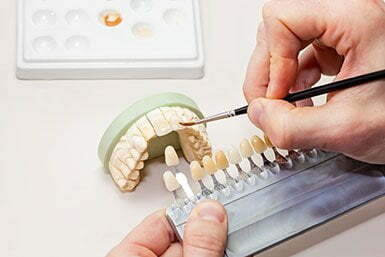 Restorative dentistry involves the diagnosis and treatment of oral diseases. Restorative dental treatments remove existing tooth decay and restore severely damaged and missing teeth. The end result is restored form and function.
Restorative dentistry involves the diagnosis and treatment of oral diseases. Restorative dental treatments remove existing tooth decay and restore severely damaged and missing teeth. The end result is restored form and function.
Types of treatments involved in restorative dentistry often address one or more missing teeth. When a tooth has been lost due to decay, trauma or extraction, there are three approaches to restoring it: implants, bridges, or partial dentures.
Implant restorations
An implant is placed by an oral surgeon and once it is integrated into your jaw bone, we restore it with a crown.
Crowns
Zirconia crowns repair structurally compromised teeth and can be matched to the color of neighboring teeth.
Bridges
Used to replace a missing tooth, a bridge involves at least three crowns soldered into one unit. We prepare the teeth adjacent to the area of the missing tooth. Those adjacent teeth serve as anchors for the replacement tooth, which floats over the gum where the missing tooth was. This is a fixed restoration, meaning that you don’t remove it.
Partial dentures
Partial dentures are similar to a bridge in that they can be used to restore one or more missing teeth. The key difference is that it is removable for cleaning.
Endodontics
We also perform root canal therapy to save natural teeth when infection has infiltrated the nerve.
